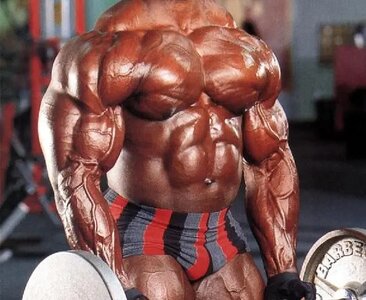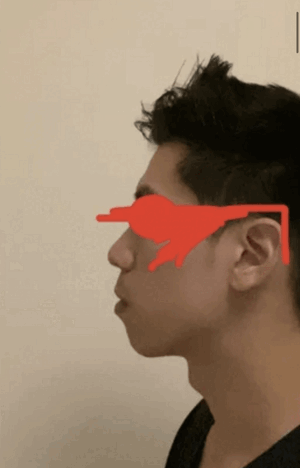1.
It’s quite likely that you’ve encountered individuals whose musculature seems disproportionately swollen, resembling bloated water sacks rather than the natural contours of lean, functional muscle. While it’s true that many of these individuals are engaging in steroid use, the situation is far more complex than that. In addition to anabolic steroids, they are also likely using synthol—a cosmetic oil specifically designed to artificially augment muscle size. It is essential to understand that synthol, unlike anabolic steroids, does not influence the body’s hormonal systems, nor does it elevate testosterone levels, activate androgen receptors, or facilitate the genuine hypertrophy of muscle tissue. Synthol is purely a superficial enhancement, injecting oil into muscle fibers to create a temporary increase in girth, with no real impact on muscle function or growth. Therefore, when discussing steroid use, it is critical to distinguish between actual muscle growth induced by steroids and the illusory results achieved through the injection of substances like synthol, which should never be confused with the real physiological effects of anabolic steroids.The topic of hair loss often resurfaces when the discussion turns to steroid use, and it’s essential to address this concern with clarity. Yes, there is some scientific evidence to suggest that certain steroids can accelerate hair loss, particularly in individuals predisposed to male-pattern baldness. However, the magnitude of this risk is not uniform across all steroids. Moreover, it’s paramount to recognize that genetic factors are far more influential in determining an individual’s likelihood of experiencing hair loss than the use of anabolic steroids. If you possess the genetic blueprint that predisposes you to baldness, steroids might expedite this process, but if you are genetically fortunate enough to have a full head of hair, steroids are unlikely to be the determining factor in your follicular fate. In essence, the recurring mention of hair loss as a consequence of steroid use is often an oversimplified and largely irrelevant argument, particularly when the real culprit in this situation is genetic predisposition rather than pharmacological intervention.
A prevailing myth that circulates within fitness communities is the notion that the use of steroids will automatically result in the development of grotesquely large, unnatural muscle masses. This is a fallacy grounded in a fundamental misunderstanding of the biological and genetic realities of bodybuilding. Steroids, while undoubtedly capable of enhancing muscle mass and strength, do not operate in a vacuum of magical transformation. The vast majority of elite bodybuilders you see—those with extraordinarily large muscles—are not only using steroids, but they are also genetically predisposed to be hyper-responders to these substances. These individuals represent a distinct subset of the population who would likely achieve exceptional physiques even without the aid of anabolic steroids. For the average person, particularly those with a naturally ectomorphic or endomorphic physique, steroids will not yield the same extraordinary results. The idea that any individual, through the mere consumption of anabolic steroids, will transform into a towering, muscular behemoth is not only misleading but also entirely unfounded. In reality, steroids will only enhance an individual’s natural potential—therefore, unless you are genetically predisposed to exceptional muscle growth, you will not suddenly acquire the physique of a professional bodybuilder, no matter how many cycles of steroids you undertake.
Steroids, when used responsibly, offer a broad spectrum of benefits that extend well beyond the mere accumulation of muscle mass. While hypertrophy is often the focal point in discussions surrounding steroid use, it is equally important to consider the enhancement of endurance, strength, stamina, and overall physical performance that steroids can provide. Steroid use also positively influences recovery times, allowing individuals to train harder and more frequently. In the case of Selective Androgen Receptor Modulators (SARMs), the benefits extend even further, with some compounds being known to improve bone density and joint health, as well as mental clarity and mood. Many individuals, particularly those who utilize testosterone-based therapies, report significant improvements in cognitive function, energy levels, and overall well-being. For these reasons, it is crucial to acknowledge that steroids and related compounds are not solely about achieving aesthetic changes in muscle mass; they offer a comprehensive suite of performance-enhancing benefits that go beyond mere physical appearance.
It is undeniably true that the use of anabolic steroids, particularly when abused at high doses over extended periods, can lead to various health risks, including liver damage, cardiovascular strain, and hormonal imbalances. However, it is essential to contextualize these concerns. The overwhelming majority of bodybuilders who suffer from severe health complications related to steroid use typically have a history of decades of abuse, beginning in their youth, often with excessive doses and improper usage protocols. The individual who engages in a single cycle of steroids or uses them responsibly, under proper supervision, is far less likely to encounter life-threatening consequences. Furthermore, there are numerous medical protocols available to mitigate the side effects associated with steroid use, including the use of Post Cycle Therapy (PCT) to restore natural hormone levels, liver protection supplements, and cardiovascular monitoring. It is important to note that while there are inherent risks, these can be effectively managed with proper education, responsible usage, and medical oversight. The idea that a single steroid cycle will lead to irreparable damage is a misconception and oversimplification, especially when contrasted with the real dangers posed by long-term, uncontrolled steroid abuse.




